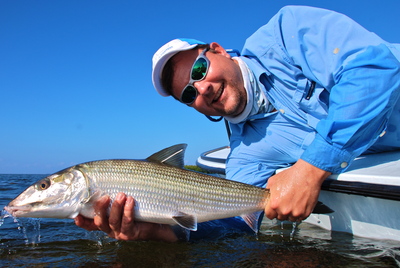A beautiful week on the water has passed and another one is following right behind. The backcountry around Flamingo has been very productive on the falling tide. Reports have come in saying the redfish and snook are eating jigs of a variety of colors that are tipped either with live shrimp or Berkley Gulp artificial shrimp. A slow bounce on the bottom has been the most effective. Live pinfish on a circle hook and a float have worked well for larger snook and baby tarpon around the mangroves. The water temperature has been steady this week, allowing fish to get comfortable on the flats. Early morning rising tides have been best for tailing redfish which are supreme targets for the fly fisherman. Snook have been mingling with them but hanging on the edges of flats and in some of the holes where they can easily escape to deeper water or ambush an easy meal.
As good as Flamingo has been fishing, the Gulf of Mexico has been leading the charge in rod bending action. I usually like the Gulf after or around cold fronts, but the off-colored water, current and temperature have been the right combinations for catching cobia, spanish mackerel, bluefish and many others. The old standby of a block of chum over the side and some varied jigging techniques, with a little patience, has produced for nearly everyone I've talked with this week.
The moon phase has left the current moving on the slower side but the tides have been high. Permit usually seek out a little more current along with those high tides, and that was evident this week that this is the case. Most of the permit I've found have been on a falling tide, usually in clear water with some good flow. The rising tide has been pretty weak and I think the permit have not been showing as well when it happens. Live crabs are the staple and a good cast placed just up current from the face of a permit will usually get a strike.
But it's the bonefish that have kept my attention this week and probably will throughout the rest of the month. As long as water temperatures remain warmish, visibility stays good and weather fronts are minor, I expect the bonefishing to be solid. For the bait fisherman, live shrimp have been working best. These fish have been pretty spooky, so when sighted, watch the direction the fish is moving and which way the current is flowing in relation to the feeding fish. A cast too close will spook and one too far might get passed by. I steer my angler to cast about 5-10 ft. beyond and in front of the fish. If the fish moves away, the cast is still good. If the fish moves the other way, a few cranks on the reel puts you in the zone. Leave the bait where it is if it's in a good spot because the line or movement of the bait can alert the fish that something isn't right. You might just twitch the bait slightly to cause some attention then let it fall back down. Read the fish to see if it locks in on your bait.
I fished with John Timura from Islamorada's Prographics Sportswear, who wanted to work on his fly casting. He's an accomplished spin fisherman and it's always good to broaden your angling abilities. Catching a big bonefish on fly is a goal for almost any fly angler. Congratulations John, on landing and releasing a nice 8-pound bonefish! We tagged it for bonefish research and hopefully someone will catch it again.

